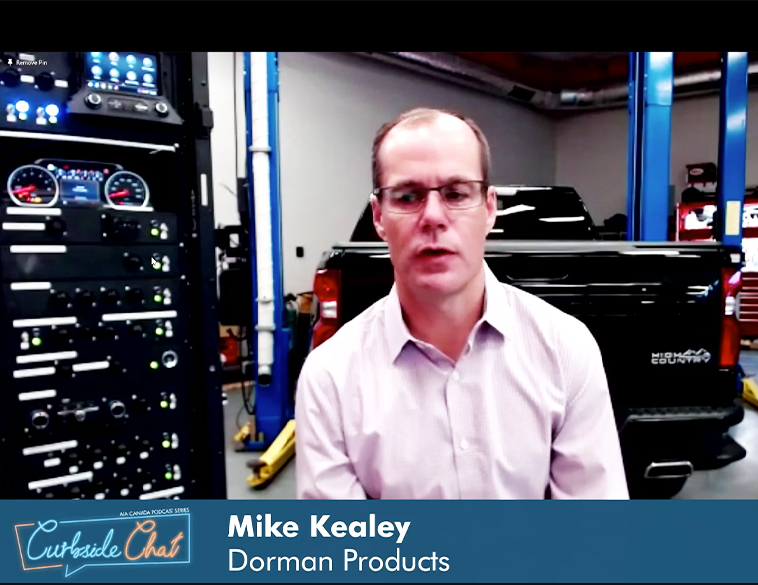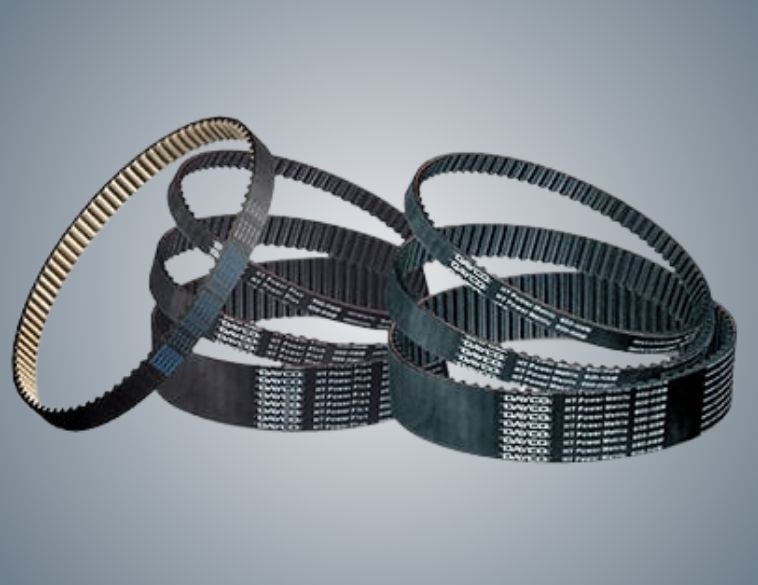Dorman Products EVP discusses the issue regarding data and software access and how it has implications for aftermarket parts manufacturers as well as service providers.
AIA Canada’s Curbside Chat series of podcasts continued in September with current Chair Bob Jaworski chatting with Mike Kealey, Executive Vice President, Commercial at Dorman Products.
Dorman, originally established in 1918, has carved out a niche in the automotive aftermarket industry in providing light-duty vehicle replacement parts.
Offering everything from window modules to climate control and vehicle infotainment clusters, to door actuators, steering components, chassis parts and complex electronic modules, Dorman has a product for almost every aspect of the modern passenger car or light truck, providing cost-effective solutions for aftermarket service providers and their customers.
Yet, as Kealey noted, times are changing, and Dorman is also evolving its business strategy. Kealey explained that Dorman sees a lot of opportunity in the larger commercial vehicle segment, specifically Class 4 through Class 8 trucks while advancing automotive and transportation technology is also providing an opportunity for the company to zero in on its processes and capabilities around advanced electronics.
“As a result,” said Kealey, “a large portion of our investments are being made in next-generation aftermarket capabilities.”
Technician shortage
A big and ongoing issue facing the aftermarket in North America is an acute shortage of well-trained automotive technicians, something that’s becoming ever more prevalent given how quickly vehicle technology is advancing at present.
Tackling this complex issue requires multiple different solutions, though as Kealey acknowledged, industry suppliers and vendors can play their part by coming together to support and enhance training programs and education platforms.
“I think we need to do a better job as an industry of attracting talent,” said Kealey.
“This is definitely a large strategic priority for us [at Dorman] and as you know, technician training is something that we’ve really been heavily focused on for the last couple of years, and something that we will continue to invest in.”
With the current focus on EVs, Kealey noted that at some point, it is likely the service and maintenance aspect of the automotive aftermarket will change, though he acknowledged that the change will likely be slow.
As a result, the aftermarket will have more than adequate time to embrace new types of vehicle architectures such as EVs and even hydrogen fuel cell vehicles to ensure they can be effectively serviced and repaired.
Although there had been a lot of talk about ride-sharing and even fractional ownership or vehicle subscription services, prior to the COVID-19 pandemic, today, the situation is different.
Interest in personal use transportation spiked in 2020 as ridership of public transit declined dramatically.
For the foreseeable future at least, it looks like private vehicles are likely to remain a top priority for many people, which represents a great deal of opportunity for the automotive aftermarket.
According to Kealey, automotive aftermarket professionals need to stay abreast of trends happening in the industry but also take dramatic headlines with a grain of salt, citing examples of a few years ago that by now, we would all be shuttled around in self-driving vehicles.
On a more serious note, in discussion with Bob Jaworski, Kealey did explain that issues surrounding vehicle data access for the aftermarket sector are very real and could have massive implications.
Software concerns
Almost every single vehicle function today is controlled by microprocessors that operate using PCVA embedded software.
For companies such as Dorman, being able to identify the required features and interfaces for these products is essential, if aftermarket replacement parts are going to be made available.
Therefore, explained Kealey, this will require writing the software to replicate each and every function of the original component, which means having access to the OEM software data that controls it.
Unfortunately, as Kealey explained, many OEMs are currently looking to restrict data access which could have major implications down the road both for them and the aftermarket.
Kealey said that if this current trend continues, and as vehicles become ever more complex and software is updated, the ability for the aftermarket to reverse engineer original equipment components will become more and more difficult, especially if OEMs don’t allow aftermarket firms to access software updates.
As a result, something like an aftermarket ABS module could be rendered useless because the manufacturer cannot get to access to the latest OEM software upgrade.
Another concern; is that with this emphasis on vehicles becoming more and more like consumer electronics on wheels with over-the-air updates required, it becomes more difficult to keep older vehicles on the road, especially if the microchips that power many of the vehicle’s features are no longer available.
This could ultimately lead to vehicles simply becoming throwaway items that last just a few years—rendering automotive service, whether it is OEM or aftermarket essentially a thing of the past.
Given that the auto industry is a 9 to 1 job multiplier in the North American economy, the ramifications of this could be tremendous and significantly detrimental to overall economic growth.
Kealey explained that if the automotive industry can find ways to work together, with greater collaboration between OEMs and the aftermarket, it is likely that such scenarios could be avoided, while at the same time, ensuring that common goals of servicing personal transportation needs while maintaining effective cyber-security and data access requirements are met.
During the session, Kealey also took time to talk about career opportunities in the aftermarket.
He explained that the very nature of the industry means it is less cyclical than some other sectors, plus the ability to improve upon components originally installed by the OEM and work across multiple different brands and types of vehicles make the industry a dynamic and exciting place to be.
“We have a little bit of everything in this industry, and the opportunities are really endless especially given the rate of change we’re seeing today,” said Kealey.



